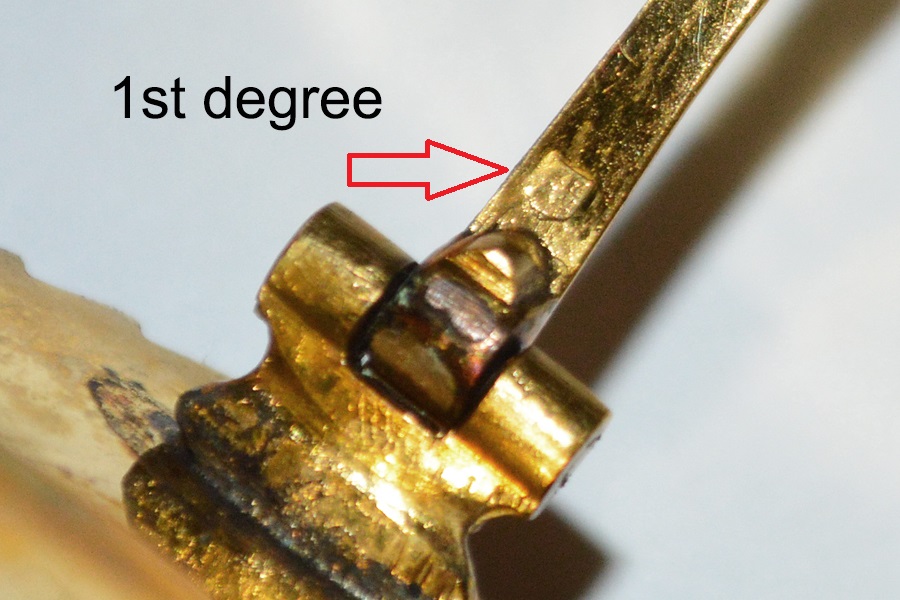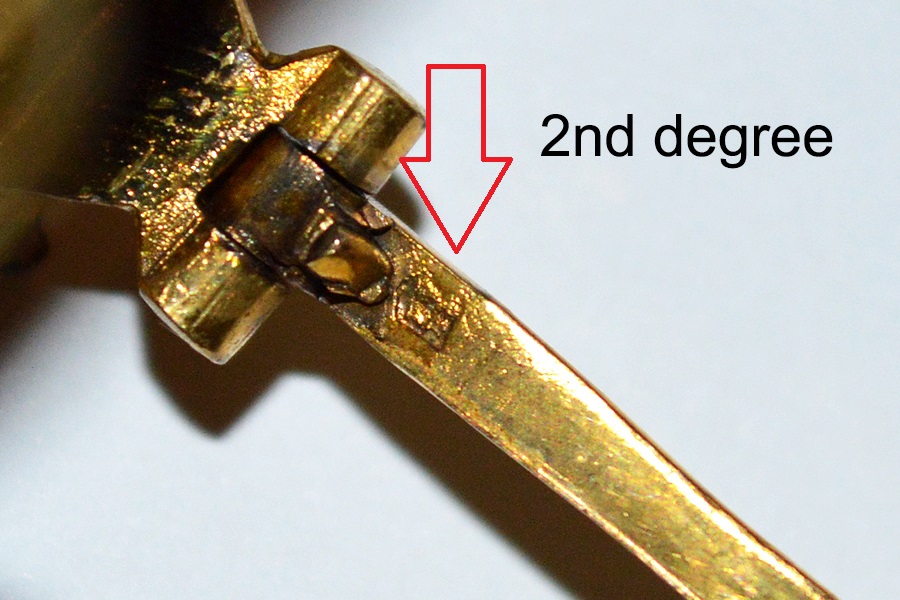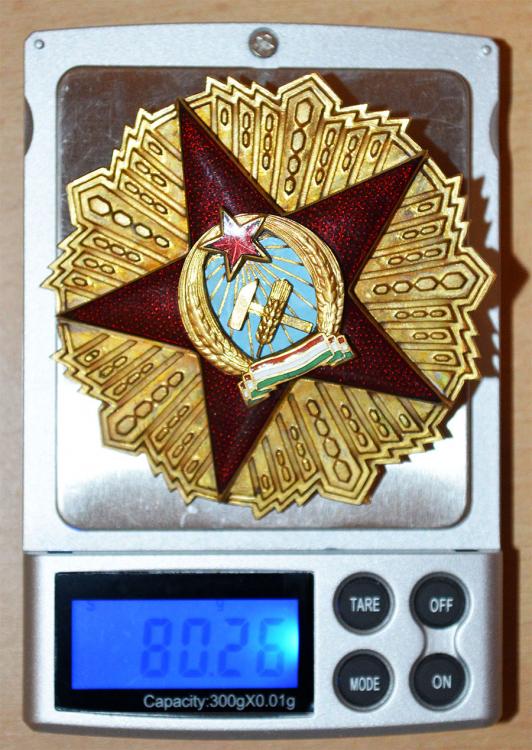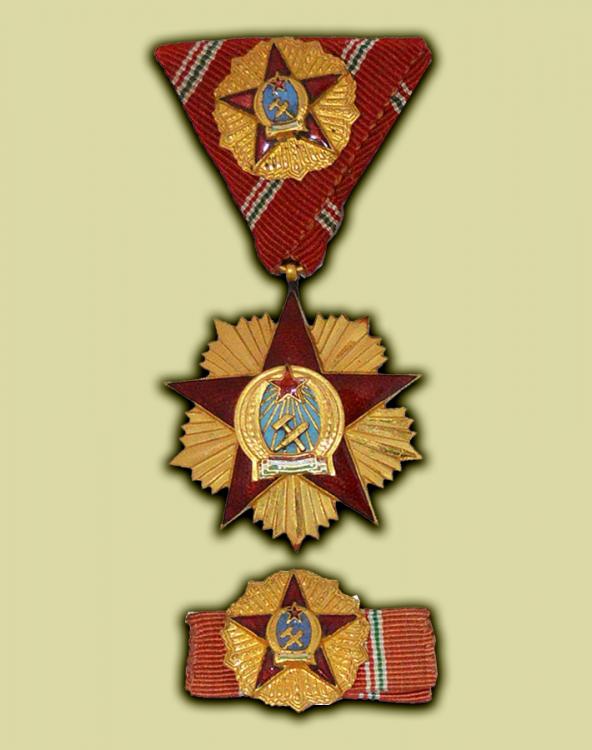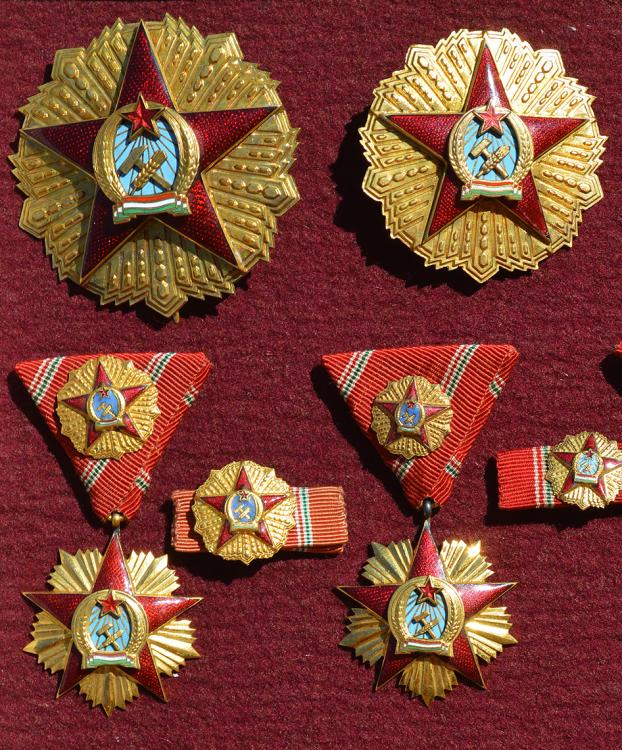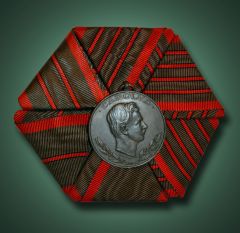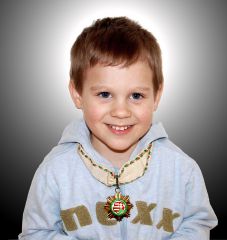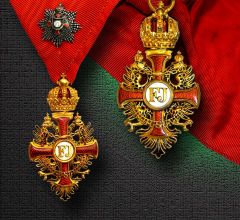-
Posts
407 -
Joined
-
Last visited
-
Days Won
1
Content Type
Profiles
Forums
Blogs
Gallery
Events
Store
Everything posted by cimbineus
-
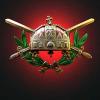
Hungary The Hungarian Order of Merit
cimbineus replied to Anatoly13's topic in Central & Eastern European States
-

Hungary The Hungarian Order of Merit
cimbineus replied to Anatoly13's topic in Central & Eastern European States
You are welcome! Those orders were made of bronze and gold plated, except of the 3rd degree which was silver plated. Here is the weight of the 1st degree: 80.26 gr. -

Hungary The Hungarian Order of Merit
cimbineus replied to Anatoly13's topic in Central & Eastern European States
Да, потрепанный он у вас бедняжка, a жаль. Лента такая должна быть с миниатюрой на ней. Here is the ribbon with the miniature on it. Покажу ещё одну фотку, если позволите. I-ая и II-ая степени со всеми принaдлежностями. :-) Here is one more picture with the first two drades of the order with "small decorations" and ribbons. -

Hungary The Hungarian Order of Merit
cimbineus replied to Anatoly13's topic in Central & Eastern European States
Congratulations, Igor. This is an excellent and scarce piece in very good conditions. Have you got the so-called "small decoration" and the ribbon with miniature as well? Let me show you the whole set of ribbons with miniatures for these orders and medals. -

Austria-Hungary Imperial Austrian Long Service Awards
cimbineus replied to Stogieman's topic in Austro-Hungarian Empire
Dear Cartaphilus, I think, everything is okay with that medal bar and Long Service Medal with number "12". That Long Service Medal was instituted in 1934 under the name “Militärdienstzeichen für zeitverpfl. Soldaten I. Klasse”. The II. Klasse was with number „5“. At that time in Austria there were six Long Service Medals, as far as I know. Two for officers (after 35 and 25 years of active duty), two for "professional" NCOs (Berufsunteroffiziere - “35” and “25”) and two for contracted soldiers (Zeitverpflichtete Soldaten - "12" and "5"). Regards, cimbineus -
-
-
-
-

Austria-Hungary Long Service Cross for 18 Years - opinion please!
cimbineus replied to djn's topic in Austro-Hungarian Empire
Gents, As far as I know the XVIII medal existed from 14-4-1867 to 5-8-1869, just a bit more than for two years. Let me help you with two more types of that award: Different types in this case could easily mean different makers, so, they could exist in parallel even during that short period of time, I think. As for your question, I do not like that medal either. That cross in the picture reminds me a much later one, but the whole medal looks like a gadgeteer-made ugly piece. Let me show you the back of the first medal in my picture, since it is interesting because its unique “maker-mark”. Regards, cimbineus -
Hi Lilo, Well, some better quality pictures can help a bit, no doubt about that, but only to define if the particular Order or Star is an early type or a latter one. Even looking at a good quality picture one cannot decide for 100% the dilemma of “Cross” or “Order”. But, if this question is so important for you, I wonder, why do not you send a simple e-mail to your Military Museum or its Archive and ask about the date when those gentlemen received their awards? A simple question and the answer can dispel all your doubts, since if the date was before 1935, it is a “Cross”, and if it was 1935 or after, so, it is an “Order” regardless of its physical appearance or type. It is as simple as that. Regards, cimbineus
-
Hi Lilo, I am sorry for being silent for a while, but I am fairly busy these weeks. I hope that my answers are still within the 8-day politeness margin. Unfortunately your pictures are not clear enough to judge about the exact type of the Orders. Nevertheless, we can say for sure (100%) that Lt. Col. Umberto MADDALENA received the „Cross”. Why am I so confident? Since he died in 1931 he could only receive the Merit Cross, because the change from “Cross” to “Order” happened in 1935. The Cross shown in the picture basically can be both, the “early type” or the “latter type”. I simply cannot identify neither the Cross, nor the Star. The case of General Giuseppe VALLE is a bit more complicated, since he lived a long life that covered both “Cross” and “Order” periods, so he could receive both of them. Here the picture does not help us too much either. However, my best guess is that he also received the award before 1935, i.e. he also received the Merit Cross 1st Class. I would give to this possibility 70% probability. Here is one more help for you. If you are lucky enough to see the cases too, the finish of the Coat of Arms of Hungary on them also can tell you the type of the award, if it was made before or after 1929. (In the picture you can see the cases of the Officer's Cross of both types.) Regards, cimbineus P.S. Lilo, if you have some time and patience, please, visit my site, the “Kitüntetés Fórum” (In English: “Awards’ Forum” – I would say) where you can find interesting picture and explanations as well. You can use the translator, but many of us speak English, so, you can ask question too. http://medals.extra.hu/index.php
-
Hi Lilo, Yes, it is the "latter type" of the award, from late '30s, early '40s, and that is the Commander’s Cross with the Star of the Hungarian Order of Merit. Regards, cimbineus
-
Lilo, And here are three Commander’s Crosses in cases: Regards, cimbineus
-
Lilo, I appreciate your interest towards the Hungarian Order of Merit, and here is a bonus picture for you, one of my prize-winning photographs from 2010. Regards, cimbineus
-
Hi Lilo, Let me start with certain explanations, because this is a very complex question and not so easy to understand. Let us go step-by-step. Miklos Horthy was not the king of Hungary, but “only” the Regent. The only difference in between those two was that based on the Hungarian Constitution and laws, that as a Regent he had no right of founding Orders. He decided to solve this problem by not using the word “Order” in the names of the first awards and, by naming them “Crosses”, he circumvent this problem. Approximately 15 years later his strengthened legitimacy allowed him to put things right, and give the Hungarian highest awards their proper names. That is when the “Crosses” became “Orders” in 1935. Second, is the appearance of the “Crosses” and “Orders”. There were two basic types of them. Those, made in Vienna before 1929, the so called “early type” Crosses, and those made in Budapest after 1929, the so called “latter type” of them. Those two types can be clearly recognised. Third, is the Hungarian regulations of those time to return awards after awarding the person with a higher class of the award, or after the death of the recipient. More over, those returned Crosses could be awarded again, and again. And what is more, the clerks while changing the ribbons, made NO (!) differentiation between Grand Crosses and Commander’s Crosses, so, after a while those two became interchangeable. Regardless of their size, from 49 mm to 54 mm they all could be either Grand Crosses or Commander’s Crosses. Well, c’est la vie... My last remark is: please, note that those dates/years do not coincide (1929-1932-1935) just to complicate things even more. Consequences: Everything awarded before 1935 was “Cross” by its name. Everything awarded after 1935 was “Order” by its name. The early types of the award could be awarded or re-awarded until 1945, so, the “early type” itself can give no guaranty if it was a “Cross” or an “Order”! And, it is strange, but true, that any early piece could even be both, actually. First it definitely was a “Cross”, but if it was returned and later re-awarded and re-re-awarded, after 1935 it could become an “Order”. And, vice-versa, since the “latter type” of the Crosses appeared in 1929 but their names still were “Cross” up until 1935, so, if you see a “latter type” award, you simply cannot tell for sure if it was a “Cross” or an “Order” originally. All these mean, that in general, all types of the award could be either “Crosses” or “Orders” by their names, or even both of them, and only the knowledge of the date when the decoration was awarded can give the necessary assurance about its exact name. My answer is: Commander’s Cross and Grand Officer’s Cross are basically similar things, but those names sometimes can ba confusing too. The Hungarian names of the Classe of the Hungarian Order of Merit are: Grand Cross Commander’s Cross with the Star Commander’s Cross Officer’s Cross Knight’s Cross My answer is a definite YES! I must admit, I am not so sure at all. As you could see, to judge about this can be very tricky sometimes. This was my feeling looking at the pieces, but let me recapitulate my previous phrase and correct myself in a certain way. In the picture we can see the “latter type” of the award, made after 1929 and it could be awarded either as “Cross” (20-25%) or as “Order” (75-80%). Regards, cimbineus
-
And the Star
-
And here is a closer view:
-
Hi Lilo, This is an "Order" with the Star. The Hungarian Merit Order, Commander's Cross with the Star. Most probably awarded between 1935 and 1940. Here is a picture for you showing both, the Hungarian Merit Cross, II. Class with the Star - 1923-1935, and the Hungarian Merit Order, Commander's Cross with the Star - 1935-1945. Regards, cimbineus
-

Hungary My Venture into The Hungarian Order of Merit
cimbineus replied to Stogieman's topic in Central & Eastern European States
Dear Stogieman, This is an excellent bar and many thanks for sharing the picture with us. I am sorry, but I think that this is the Klein Dekoration of the Second Grade and not that of the First Grade. Here is a picture of all Fifth Grades, I mean the four Klein Dekorations for First to Fourth Grades and the Fifth Grade itself: Regards, cimbineus -

Hungary Medal of Merit for Service to the Country
cimbineus replied to Gordon Craig's topic in Central & Eastern European States
Gordon, Yes, indeed, it is difficult to see the differences between the No.5. and No.6. Here is a closer view, but still, to much of flare and lustre. Regards, cimbineus -

Hungary Medal of Merit for Service to the Country
cimbineus replied to Gordon Craig's topic in Central & Eastern European States
Gordon, Please, see the differences comparing the averses and the reverses of the Medals. Only one thing is not obvious from the pictures, the difference between the Medals No. 5. and No. 6. Those are basically similar pieces but the No. 5 is finished in traditional enamel, whilst the No. 6. is covered with coloured epoxy resin, a kind of plastic. The last one is simply painted. (Plastics and paints?! Disgusting! Where are the old traditions of the Hungarian medallists?) Regards, cimbineus -

Hungary Medal of Merit for Service to the Country
cimbineus replied to Gordon Craig's topic in Central & Eastern European States
Gents, This picture shows all three types of the Medal. The first type is with the ’49 coat of arms. The second type is with the ‘Kossuth’ coat of arms. And, the last five ones are the five variations of the third type with the ’57 coat of arms. Regards, cimbineus -

Hungary Medal of Merit for Service to the Country
cimbineus replied to Gordon Craig's topic in Central & Eastern European States
Hi, Yes, the Medal is okay, but with a slight correction. These Merit Medals were from 1964 to 1989. Those in 1956-1957 were a bit different in their appearance and their name was Commemorative Medal for Service to the Country, and these are extremely scarce. Regards, cimbineus



